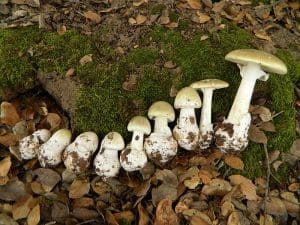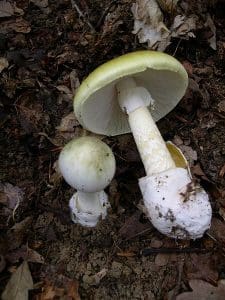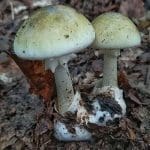Death cap / Summer /Autumn / Deadly
Prepare yourself for a chilling exploration as we dive into the treacherous world of the Death Cap (Amanita phalloides).
Within the serene beauty of forests lies a silent assassin, one of the most poisonous mushrooms known to mankind. Join us on this cautionary journey as we unravel the secrets of this deceptively alluring fungus. From its elegant appearance to its sinister potency, the Death Cap strikes fear into the hearts of foragers and mushroom enthusiasts. Learn to distinguish its telltale characteristics, discover the deadly toxins it harbors, and understand the grave consequences of even the slightest misstep.
Through this knowledge, we hope to protect and empower, arming you with the understanding necessary to navigate the natural world’s perilous edges. Brace yourself as we unveil the truth about the Death Cap, reminding us all of the importance of caution, awareness, and respect for nature’s hidden dangers.
Common Name
Death Cap
None Edible
Deadly Toxic!!
Botanical Name
Amanita phalloides
Meaning of Botanical Name
Phalloides refers to the shape of the young mushroom emerging from its egg sack.
Family
Amanitaceae
Known Hazards
DEADLY, this mushroom contains amotoxin, which in the first 6-12 hours after eating cause severe gastric upsets, those symptoms pass and the consumer is fine until day 3-4 when the severe liver and kidney damage has been done which leads to coma and death. (half a cap is enough to kill a human)
Could be confused with
The Fase Death Cap (Amanita Citrina) this mushroom smells strongly of raw potato and often has veil ( egg sack) reminants on the cap.
Field mushrooms (Agaricus Campestris) These mushrooms have pink to brown black gills not white and don’t have a bulbous base or egg sack remnants at the base of the stem
Distribution
The Death Cap occurs throughout Britain and Ireland and can also be found in other mainland European countries at low altitudes, the death cap is found also in northern Africa, many parts of Asia, and the USA . Other parts of the world, including Australia and South America, now contain the death cap due tree imports.
Habitat
The death cap is mycorhizal with Oak trees
Physical Characteristics
Volva
Like all amanita this mushroom grows from a volva (egg sack)
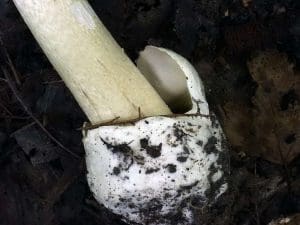
Cap
The cap is olive-brown and quite shiny, it doesnt have any warts or spots but does look fibrous towards the edge of the cap. Its often darker in the centre of the cap. Dome shaped when young and flattening with age, the edge is prone to splitting when dry.
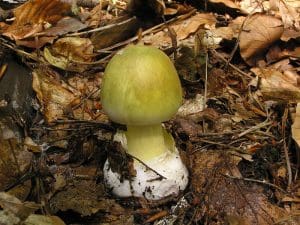
Gills
The gills are crowded and white, they are adnexed (narrowly joined to the stem) with age the gills begin to turn more of a creamy colour.
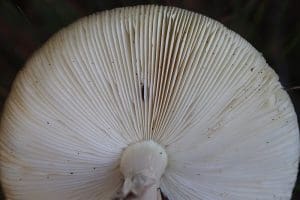
Stem & Skirt
The tall stem is creamy coloured with zig-zag like scales, it has a large striped veil (skirt).
The base is surrounded by the white volva (egg sack)
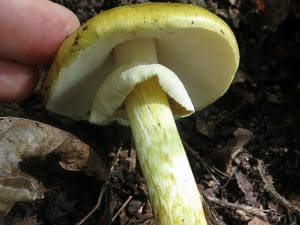
Smell
Slight sweet floral smell, becoming sickly as it matures
Spores
White
Edible Use
None- Do Not Eat This Mushroom!
Folklore, Tall Tales and not so Folklore
The roman Emperor Claudius was believed to of been poisoned by his wife with the death cap, she made him a meal of Caesar’s mushrooms and added some death caps. Also Emperor Charles the VI died due to death cap poisoning. The death cap has been the weapon of many poisoners through the centuries especially by ancient Greeks and Romans.
